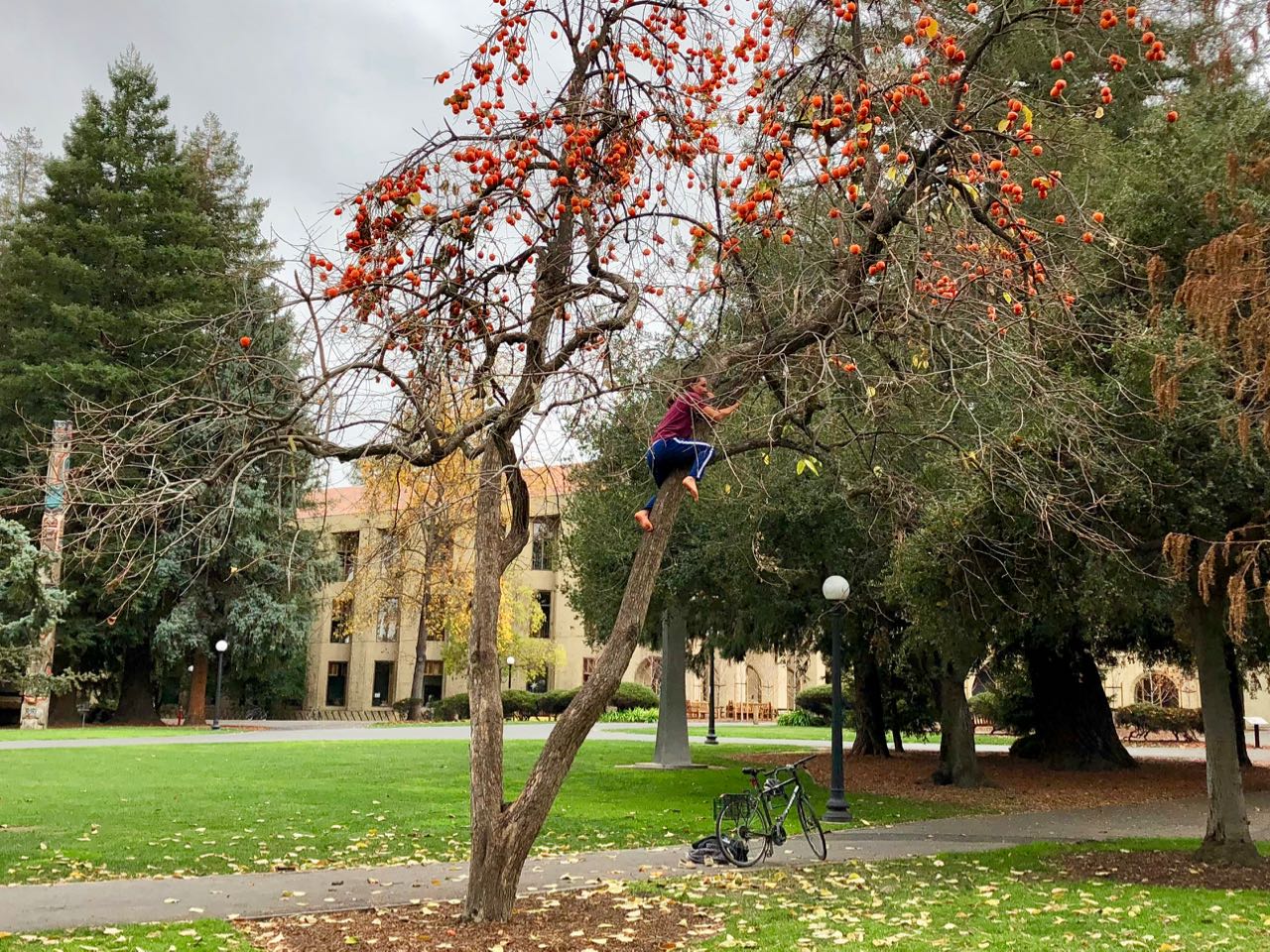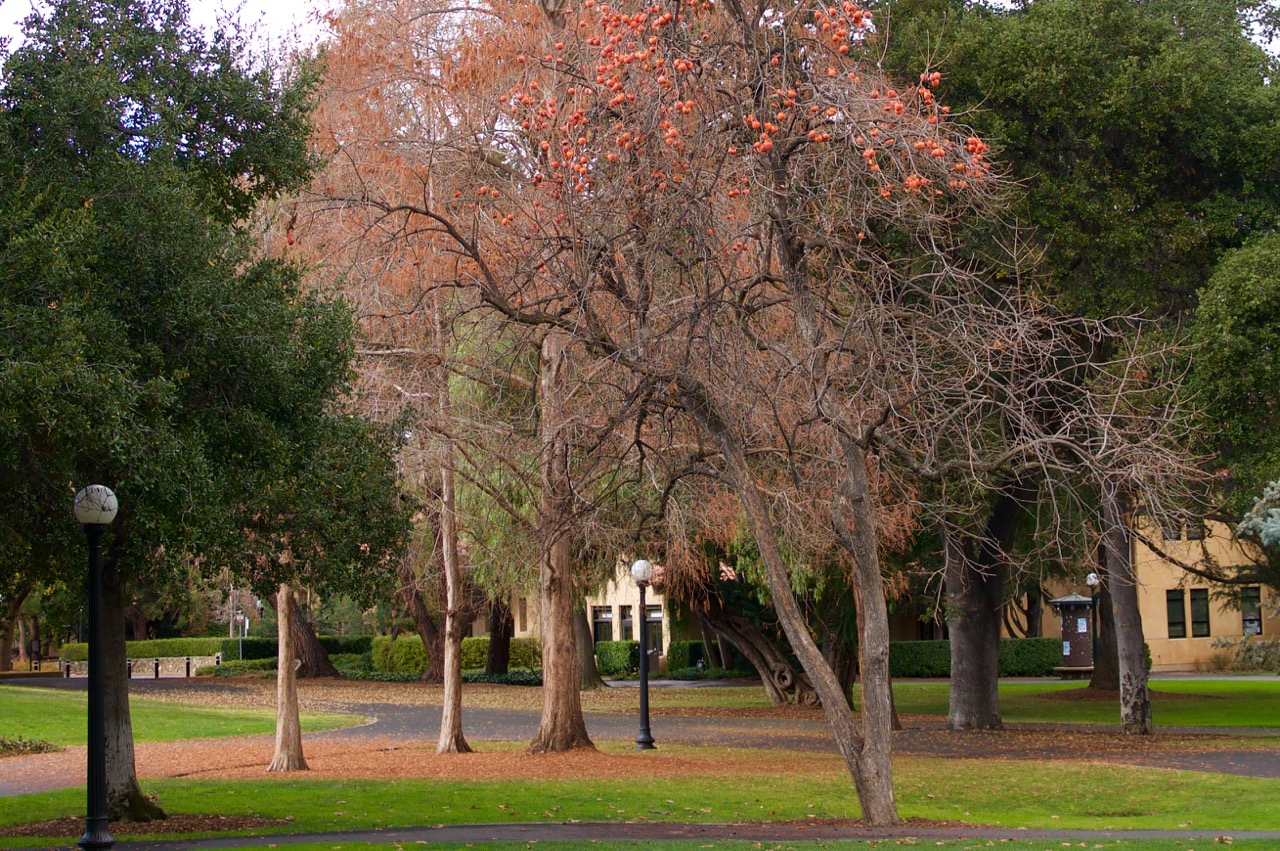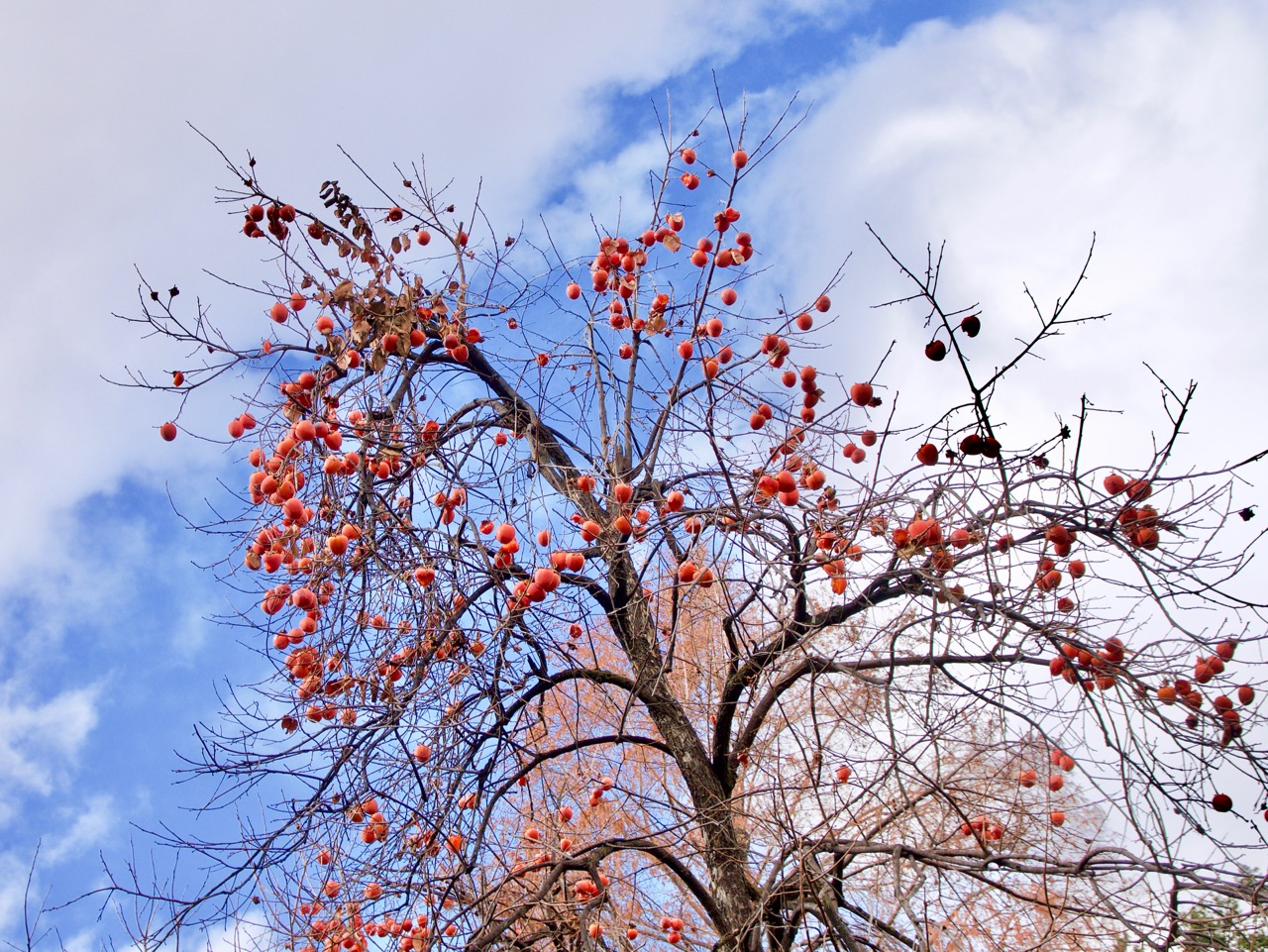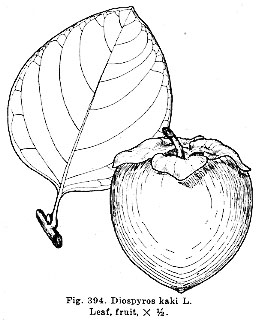Diospyros kaki
 Japanese persimmon
Japanese persimmon


Grown for ornament, persimmons stand out in private gardens where they often occupy a place of distinction. After the leaves fall in autumn, the bright orange fruits light up the trees, so it is easy to find them.
Variety ‘Hachiya’ has fruit 4 inches long and 3 inches across that are very good to eat when just ripe, for those who have acquired the taste, and are so abundant that owners will probably give you one on request. See them at 658 Mayfield Avenue and due south of The Knoll on Lomita Drive. The one in Canfield Court to the northeast of the Bookstore, 50 feet east of the dawn redwoods, is the sole remnant of the family home of former Stanford education dean Henry Thomas “Tom” James in that spot. It continues to pump out fruit, and its upper crown is heavy with it even at the start of the new year.
Variety ‘Fuyu’, with oblate tomato-shaped fruits, grows in the small enclosure at the southeast corner of the Old Union Courtyard. Both varieties are sold in local markets. Persimmons can be sun-dried after peeling and prepared in many other ways, depending on the variety, of which there are many.
The American persimmon (D. virginiana) has a distinctly smaller, walnut-sized fruit but gave us the name persimmon, which derives from an Algonquin word. It is mainly collected from wild trees. Another species, the ebony tree D. ebenum that grows in India and Sri Lanka, is the tree that yields the very hard and very dark timber most often called ebony (as is Bauhinia, which is also grown in plantations as a crop in Madagascar and Mauritius).

· For more about persimmons see Persimmon Facts, California Rare Fruit Growers.
Name derivation: Diospyros – from Greek Dios (Jove’s) and pyros (grain); kaki – Japanese name for tree.
About this Entry: The main text of this entry is from the book Trees of Stanford and Environs, by Ronald Bracewell, published 2005. History of Bookstore persimmon added, D. ebenum name corrected by Sairus Patel, Jan 2018.




